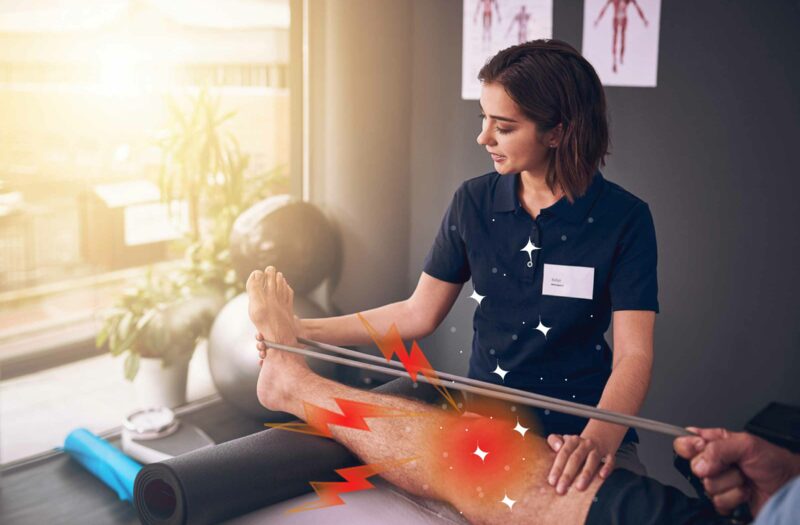

Knee osteoarthritis (OA) is extremely common — and often extremely painful. Many people with severe knee OA end up taking opioid medication like oxycodone (OxyContin) or hydrocodone (Vicodin). While these powerful pain relievers can help with the pain, they can also have side effects like constipation and sleepiness. Yet the biggest problem with opioids is that they’re highly addictive and may lead to abuse, especially when taken for an extended period.
According to the latest results from the U.S. Department of Health and Human Service, in 2019, roughly 10.1 million people aged 12 or older misused opioids — and, specifically, nearly 10 million people misused prescription pain relievers.
Public health experts have been struggling for years with ways to curtail the opioid epidemic, and one key strategy has been to encourage pain patients and their providers to incorporate non-drug therapies, including physical therapy (PT), into their treatment plan.
Now a new study confirms that PT might be especially important in the fight against opioid abuse for those who undergo total knee replacement (TKR) surgery.
How the Study Worked
The study, published in Physical Medicine and Rehabilitation, looked at data on more than 67,000 people who had TKR between 2001 and 2016. The authors aimed to determine whether patients who had PT before and/or after surgery were less likely to become long-term opioid users.
According to their findings, those who attended even a single PT session before or after TKR had a lower risk of long-term opioid use after surgery. Those who had several sessions — ideally 13 or more after surgery — benefitted most, especially if they had already tried opioids prior to their knee surgery. “The opioid-naive cohort [who did not use opioids prior to surgery] exhibited a similar (although nonsignificant) trend,” the authors wrote.
Regardless of whether someone used opioids before knee replacement surgery, starting PT in a timely fashion — within a month of the procedure — was also associated with a reduced risk of long-term opioid use.
What These Findings Mean for You
While these findings certainly don’t mean that you should skip post-operative pain relievers, they add to the evidence that PT is helpful and may reduce the chances that you’ll need to be on strong pain medication for months or even years. The takeaway: Talk to your doctor about alternative ways to minimize the pain of knee OA.
Get Involved in Arthritis Research
If you are diagnosed with OA or a type of rheumatic disease, we encourage you to participate in future studies by joining CreakyJoints’ patient research registry, ArthritisPower. ArthritisPower is the first-ever patient-led, patient-centered research registry for joint, bone, and inflammatory skin conditions. Learn more and sign up here.
Aoyagi K, Neogi T, Peloquin C, et al. Association of physical therapy interventions with long-term opioid use after total knee replacement. JAMA Network Open. 2021. https://doi.org/doi:10.1001/jamanetworkopen.2021.31271.
Opioid crisis statistics. U.S. Department of Health and Human Services. https://www.hhs.gov/opioids/about-the-epidemic/opioid-crisis-statistics/index.html.
Prescription opioids. Centers for Disease Control and Prevention. https://www.cdc.gov/opioids/basics/prescribed.html.





